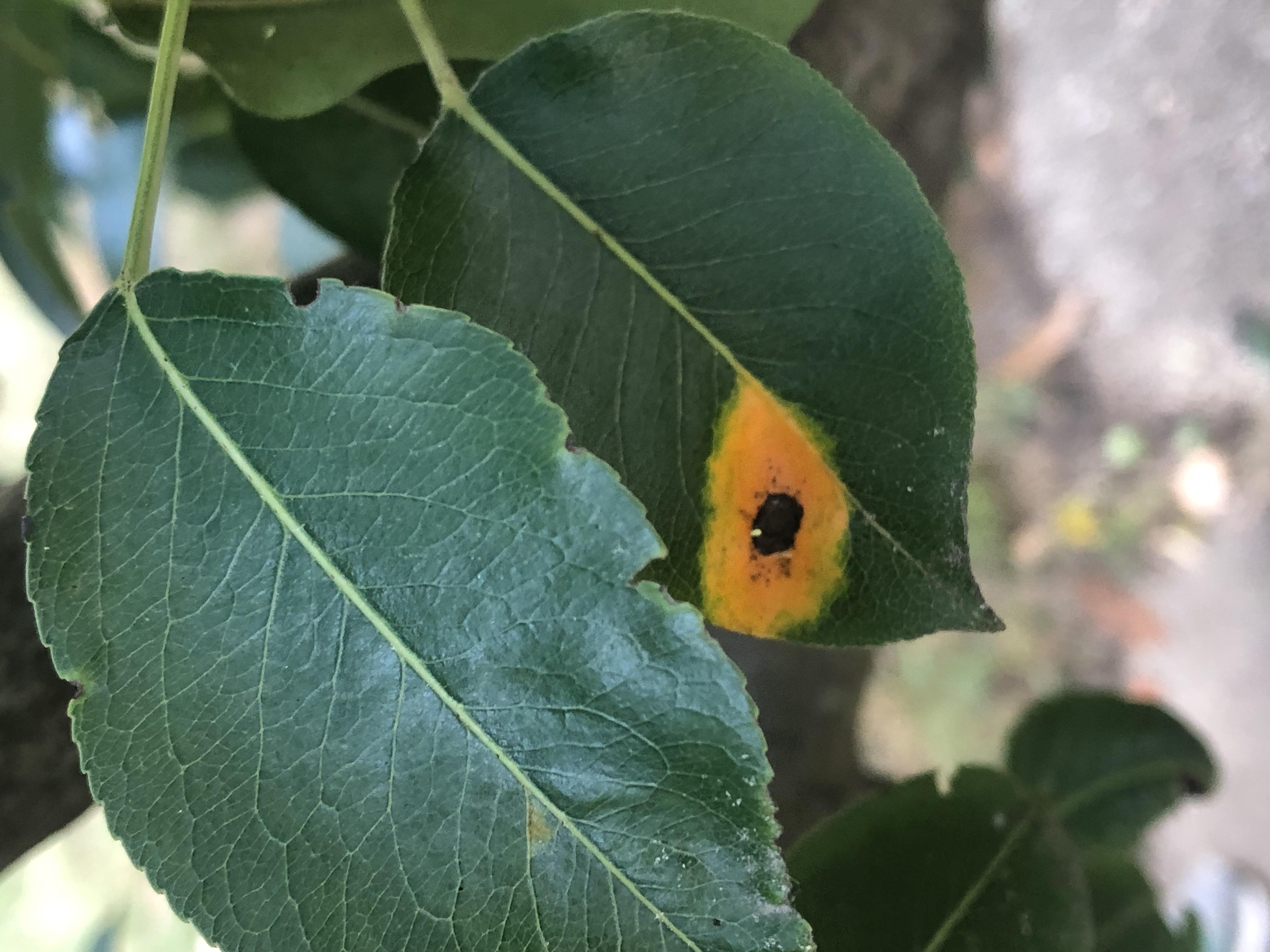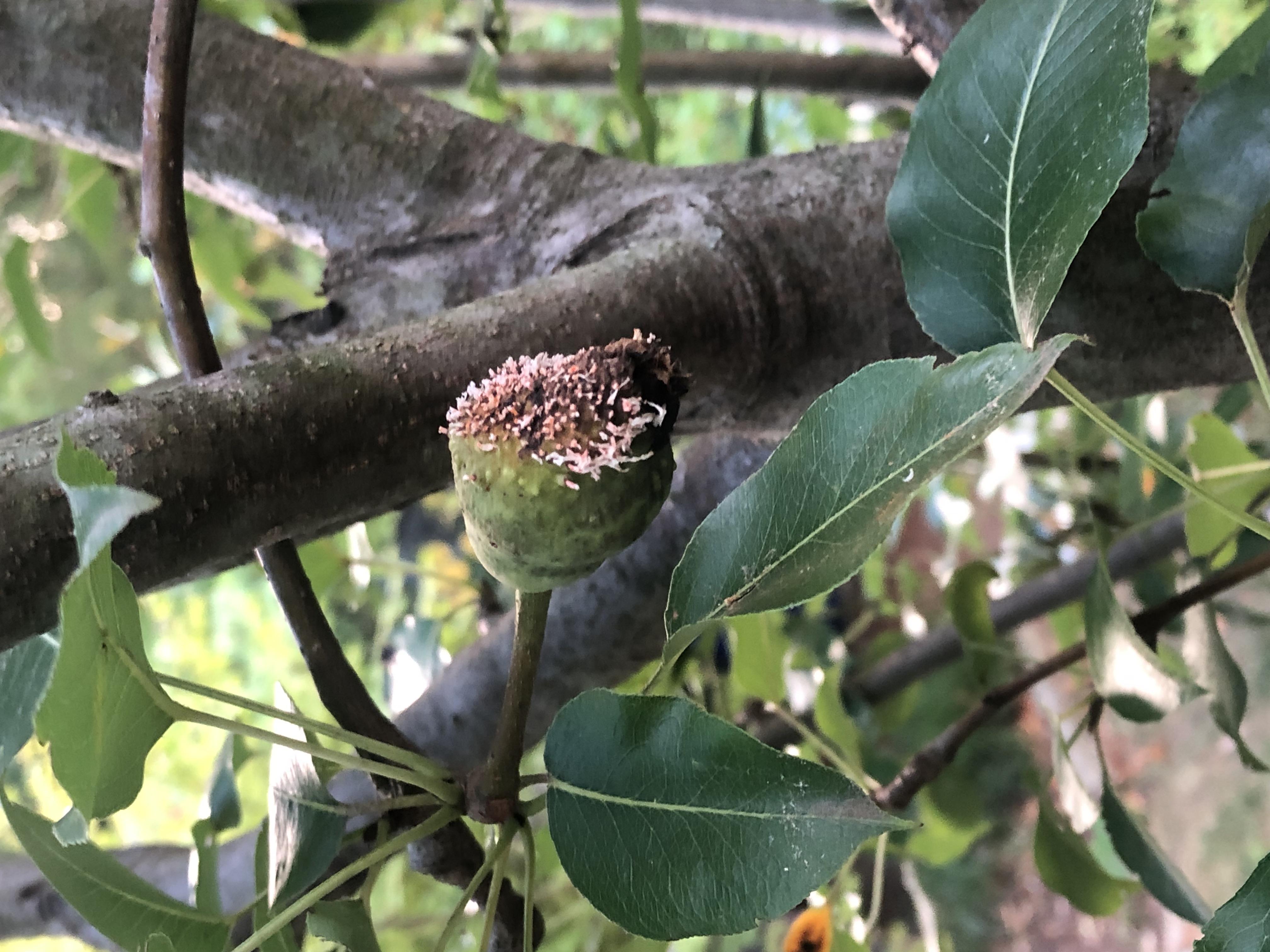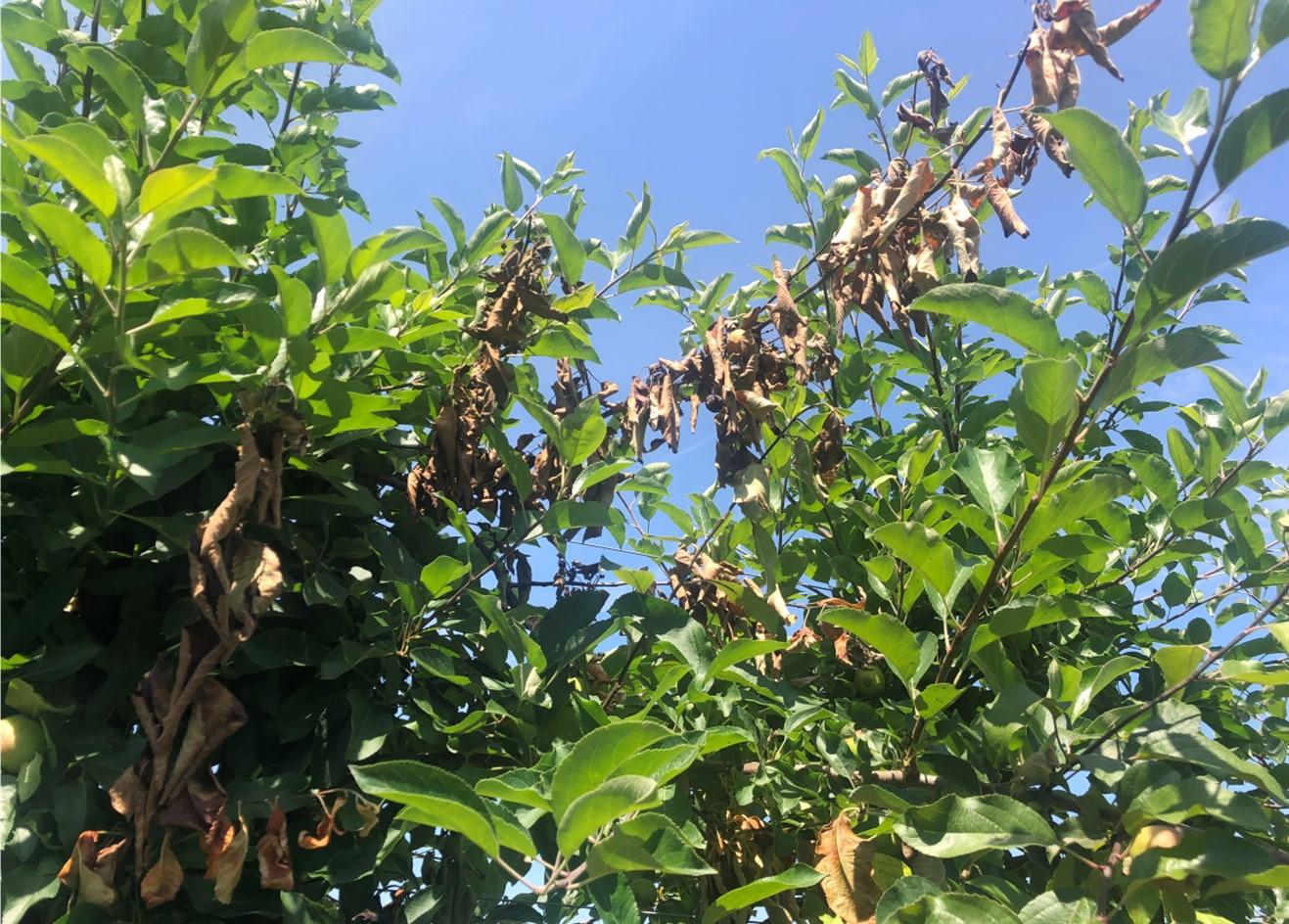Looking Back at Spring and Ahead to Harvest: Fireblight, Rust and Chemical Thinning


March, April and May brought a lot of rainy weather. With the last month of hot dry weather, it seems so distant. For some apple and pear growers, the spring rains made it difficult to control fireblight. We also saw a lot more rust this year. Both diseases have plagued mid-Atlantic fruit growers for more than a century.
Fireblight caused the most problems for growers. Despite multiple applications of prohexadione-calcium (Apogee ™) and streptomycin, many growers still needed to cut out shoot blight in late May. This went on until mid-June when above-90 degree temperatures stopped shoot blight.
This year we sent a number of samples from young and established orchards to Dr. Kerik Cox’ plant pathology lab at Cornell. His graduate student, Isabella Yannuzzi, is very helpful to fruit growers, isolating Erwinia amylovora and then testing it for streptomycin resistance.
We had hypothesized that the difficulties controlling fireblight in 2023 and 2024 might be due to the presence of streptomycin-resistant Erwinia. This was not the case. All the Erwinia isolates from Maryland orchards were susceptible to streptomycin.
The question remains - why have we had so much difficulty controlling fireblight during the past two years?
Many growers have planted blight-susceptible trees like Gala, Cripps Pink, Fuji, Evercrisp, and European cider varieties in tall-spindle plantings. These susceptible trees set the stage. A wet spring then created perfect conditions for blossom blight in some orchards. Blight was worse in blocks planted at lower-elevations, bordered by woods, and lacking adequate air drainage.
In addition to fireblight we also saw rusts in pome fruits. These rusts require an alternate host to complete their life cycle. With the wet weather, we saw an unusual number of infections from cedar-apple rust on apples and cedar-quince rust on pears.
While cloudy wet weather caused increased disease pressure, it did help Maryland growers with chemical thinning. Most growers reported a better response to thinners than in years past. The cloudy, rainy weather after bloom likely reduced photosynthesis and increased the effectiveness of chemical-thinning treatments.
While it’s been dry for more than a month now, our fruit crops are under stress. Hopefully, fruit size will still be good at harvest due to the better-than-expected response to chemical thinning.
Acknowledgements: We wish to thank Kerik Cox and Isabella Yannuzzi of Cornell University for processing our samples, and growers in Washington, Montgomery, Howard and Caroline Counties for their cooperation.
This article appears in Volume 15, Issue 6 of the Vegetable and Fruit News.
